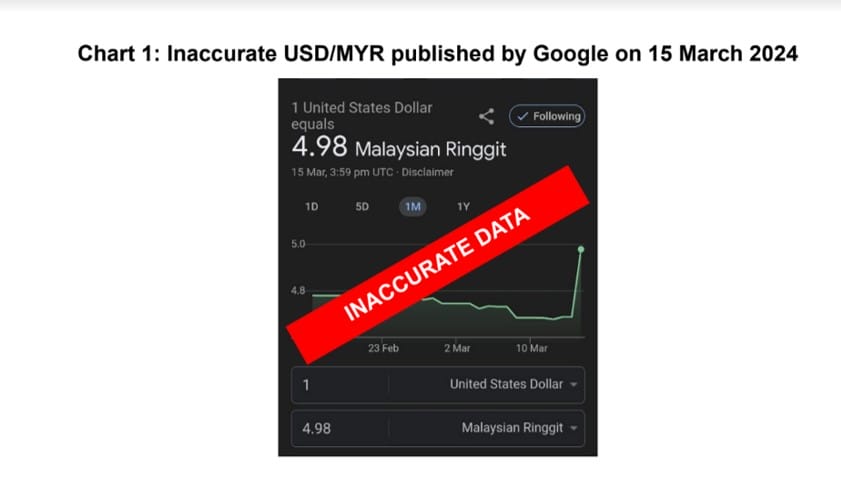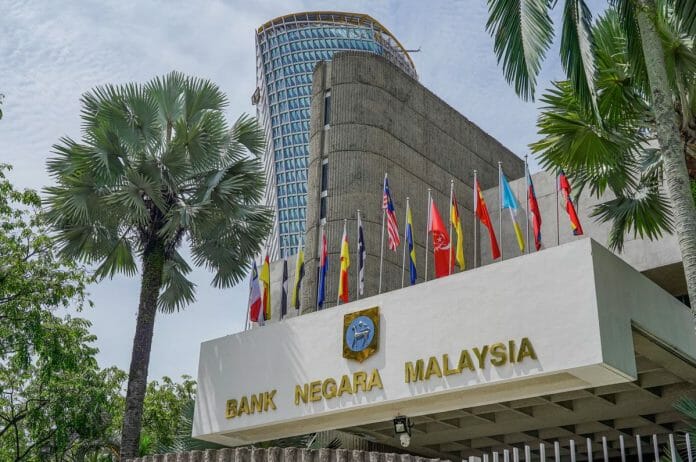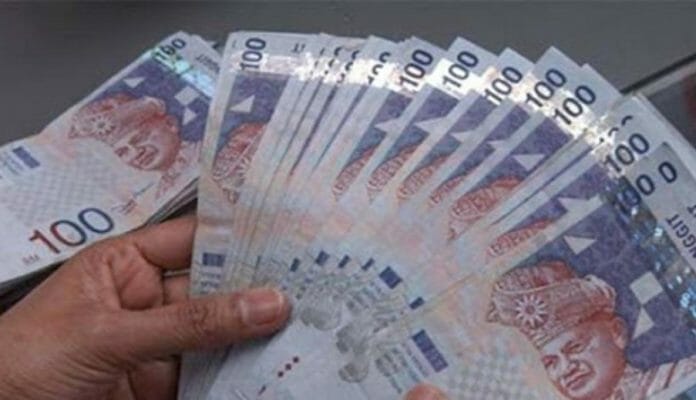By Dr. Hj. Muhammad Khusairy– In recent years, a Malaysian and worldwide phenomenon known as “shrinkflation” has gained attention in the consumer market. Shrinkflation refers to the practice of reducing the size or quantity of a product while maintaining its price, effectively leading to a hidden price increase for consumers. This deceptive tactic has significant implications for both individuals and the economy at large, particularly in a country like Malaysia. In this article, we will delve into the concept of shrinkflation, examine its adverse effects on consumers and the economy, and discuss the urgent need for proactive measures by the Malaysian government to address this issue.
The concept of shrinkflation can be traced back to economic principles of inflation and cost management. When businesses face rising production costs, such as raw materials, labor, or transportation, they often seek ways to maintain profitability. One strategy is to reduce the size or quantity of products while keeping the price unchanged. This allows companies to offset cost increases without overtly raising prices, which could deter consumers. This should alert the government as it affects the blockchain and circular economy in Malaysia. On the other hand, it is part of the “riba” concept, which is forbidden in Islam, as interest is currently taking place in the market, which makes it “haram” in many ways, even though it is halal to consume.
Shrinkflation can manifest in various forms, such as reducing the contents of food packages, diminishing the amount of product in household items, or offering smaller portions in restaurants without adjusting prices accordingly. While these changes may seem minor individually, they collectively erode consumer purchasing power and contribute to inflationary pressures over time.
The foremost impact of shrinkflation is felt by consumers, who may not immediately realize they are paying more for less. For example, a chocolate bar that used to weigh 100 grams may now weigh 90 grams but is still sold at the same price. While this difference might appear negligible, repeated across multiple purchases, it leads to a significant cost increase for consumers over time. Thus, cross nations if consumers are aware the impact has taken place and significant changes in volume even though prices remain the same. Crossing from bottled drinks to packed food.
Moreover, shrinkflation can be particularly burdensome for low-income households in Malaysia. These families often have limited budgets and rely on affordable products for daily necessities. When product sizes shrink without a corresponding reduction in price, it squeezes their purchasing power and forces them to either buy less or allocate more of their income to maintain the same level of consumption.
Furthermore, shrinkflation can be misleading for consumers who rely on price comparisons or historical trends to assess value. A product that appears to have a stable price over time may, in reality, be subject to shrinkflation, distorting perceptions of inflation and affecting consumer trust in pricing transparency.
Beyond its immediate impact on consumers, shrinkflation has broader economic implications that can affect Malaysia’s economic stability and growth prospects. One significant consequence is its contribution to inflationary pressures within the economy. While traditional inflation measures may not capture shrinkflation directly, its cumulative effect contributes to the overall rise in consumer prices, potentially leading to higher inflation rates than officially reported.
High inflation rates, fueled in part by shrinkflation, can erode purchasing power, reduce consumer confidence, and disrupt long-term consumption patterns. This can create a vicious cycle where consumers cut back on spending, leading to lower demand for goods and services, which in turn can dampen economic growth and investment.
Moreover, shrinkflation can impact competitiveness and market dynamics. Domestic producers may resort to shrinkflation as a short-term cost management strategy, but if not properly regulated, it can distort price signals, hinder innovation, and reduce the quality of products over time. This can undermine Malaysia’s competitiveness in global markets and hinder efforts to attract foreign investment and promote sustainable economic development.
Given the detrimental effects of shrinkflation on consumers and the economy, proactive measures are essential to mitigate its impact and promote fair and transparent pricing practices. The Malaysian government can play a pivotal role in addressing the shrinkflation challenge through a multifaceted approach.
Firstly, regulatory agencies such as the Ministry of Domestic Trade and Consumer Affairs should enhance monitoring and enforcement efforts to detect instances of shrinkflation. This includes conducting regular inspections of product packaging and labeling to ensure that consumers are informed about any changes in quantity or size.
Secondly, there is a need for greater transparency and disclosure requirements for businesses engaging in shrinkflation. Companies should be obligated to communicate any changes in product sizes or quantities to consumers, accompanied by explanations for price adjustments. This transparency empowers consumers to make informed purchasing decisions and fosters trust in the marketplace.
Thirdly, the government can incentivize companies to adopt responsible pricing practices through tax incentives or rewards for maintaining stable product sizes and prices over time. Conversely, penalties or fines can be imposed on businesses found guilty of deceptive shrinkflation practices, serving as a deterrent and promoting fair competition.
Additionally, consumer education campaigns are crucial to raise awareness about shrinkflation and equip individuals with the knowledge and tools to identify and respond to deceptive pricing tactics. By promoting consumer empowerment and advocacy, these campaigns can create a more vigilant and informed marketplace that values fairness and integrity.
Furthermore, collaboration with industry stakeholders, including businesses, consumer associations, and academia, is vital in developing industry standards and best practices to address shrinkflation effectively. This collaborative approach fosters dialogue, encourages innovation in pricing strategies, and promotes a level playing field that benefits both businesses and consumers. It’s the responsibility of the industry to justify the claim as well as to inform the consumer regarding the shrinkflation in advance not just do it without feeling remorseful on the matter at hand despite the so-called cost incremental.
In conclusion, shrinkflation poses significant challenges for consumers and the economy in Malaysia, leading to hidden price increases, eroding purchasing power, and distorting market dynamics. The Malaysian government must take proactive measures to address shrinkflation through enhanced regulation, transparency, consumer education, and industry collaboration.
By promoting fair and transparent pricing practices, fostering consumer empowerment, and incentivizing responsible business conduct, Malaysia can mitigate the adverse effects of shrinkflation and build a more resilient and equitable economy. Through concerted efforts and stakeholder engagement, Malaysia can emerge as a leader in combating shrinkflation and promoting consumer welfare and economic prosperity.
By Ts. Dr. Hj. Muhammad Khusairy Bin Capt. Hj. Bakri, a Postdoctoral Research Associate at the Composite Materials and Engineering Center, Washington State University (WSU), and a Lead Research and Development Sector of the Association of Professional Technicians and Technologists (APTT) Sarawak, and Ahmad Faisal Bin Mahdi is a Senior Lecturer at the Faculty of Business and Management, Universiti Teknologi MARA (UiTM), a Chartered Institute of Marketing member






















Shrinkflation Impact On Consumers And The Malaysian Economy
By Dr. Hj. Muhammad Khusairy– In recent years, a Malaysian and worldwide phenomenon known as “shrinkflation” has gained attention in the consumer market. Shrinkflation refers to the practice of reducing the size or quantity of a product while maintaining its price, effectively leading to a hidden price increase for consumers. This deceptive tactic has significant implications for both individuals and the economy at large, particularly in a country like Malaysia. In this article, we will delve into the concept of shrinkflation, examine its adverse effects on consumers and the economy, and discuss the urgent need for proactive measures by the Malaysian government to address this issue.
The concept of shrinkflation can be traced back to economic principles of inflation and cost management. When businesses face rising production costs, such as raw materials, labor, or transportation, they often seek ways to maintain profitability. One strategy is to reduce the size or quantity of products while keeping the price unchanged. This allows companies to offset cost increases without overtly raising prices, which could deter consumers. This should alert the government as it affects the blockchain and circular economy in Malaysia. On the other hand, it is part of the “riba” concept, which is forbidden in Islam, as interest is currently taking place in the market, which makes it “haram” in many ways, even though it is halal to consume.
Shrinkflation can manifest in various forms, such as reducing the contents of food packages, diminishing the amount of product in household items, or offering smaller portions in restaurants without adjusting prices accordingly. While these changes may seem minor individually, they collectively erode consumer purchasing power and contribute to inflationary pressures over time.
The foremost impact of shrinkflation is felt by consumers, who may not immediately realize they are paying more for less. For example, a chocolate bar that used to weigh 100 grams may now weigh 90 grams but is still sold at the same price. While this difference might appear negligible, repeated across multiple purchases, it leads to a significant cost increase for consumers over time. Thus, cross nations if consumers are aware the impact has taken place and significant changes in volume even though prices remain the same. Crossing from bottled drinks to packed food.
Moreover, shrinkflation can be particularly burdensome for low-income households in Malaysia. These families often have limited budgets and rely on affordable products for daily necessities. When product sizes shrink without a corresponding reduction in price, it squeezes their purchasing power and forces them to either buy less or allocate more of their income to maintain the same level of consumption.
Furthermore, shrinkflation can be misleading for consumers who rely on price comparisons or historical trends to assess value. A product that appears to have a stable price over time may, in reality, be subject to shrinkflation, distorting perceptions of inflation and affecting consumer trust in pricing transparency.
Beyond its immediate impact on consumers, shrinkflation has broader economic implications that can affect Malaysia’s economic stability and growth prospects. One significant consequence is its contribution to inflationary pressures within the economy. While traditional inflation measures may not capture shrinkflation directly, its cumulative effect contributes to the overall rise in consumer prices, potentially leading to higher inflation rates than officially reported.
High inflation rates, fueled in part by shrinkflation, can erode purchasing power, reduce consumer confidence, and disrupt long-term consumption patterns. This can create a vicious cycle where consumers cut back on spending, leading to lower demand for goods and services, which in turn can dampen economic growth and investment.
Moreover, shrinkflation can impact competitiveness and market dynamics. Domestic producers may resort to shrinkflation as a short-term cost management strategy, but if not properly regulated, it can distort price signals, hinder innovation, and reduce the quality of products over time. This can undermine Malaysia’s competitiveness in global markets and hinder efforts to attract foreign investment and promote sustainable economic development.
Given the detrimental effects of shrinkflation on consumers and the economy, proactive measures are essential to mitigate its impact and promote fair and transparent pricing practices. The Malaysian government can play a pivotal role in addressing the shrinkflation challenge through a multifaceted approach.
Firstly, regulatory agencies such as the Ministry of Domestic Trade and Consumer Affairs should enhance monitoring and enforcement efforts to detect instances of shrinkflation. This includes conducting regular inspections of product packaging and labeling to ensure that consumers are informed about any changes in quantity or size.
Secondly, there is a need for greater transparency and disclosure requirements for businesses engaging in shrinkflation. Companies should be obligated to communicate any changes in product sizes or quantities to consumers, accompanied by explanations for price adjustments. This transparency empowers consumers to make informed purchasing decisions and fosters trust in the marketplace.
Thirdly, the government can incentivize companies to adopt responsible pricing practices through tax incentives or rewards for maintaining stable product sizes and prices over time. Conversely, penalties or fines can be imposed on businesses found guilty of deceptive shrinkflation practices, serving as a deterrent and promoting fair competition.
Additionally, consumer education campaigns are crucial to raise awareness about shrinkflation and equip individuals with the knowledge and tools to identify and respond to deceptive pricing tactics. By promoting consumer empowerment and advocacy, these campaigns can create a more vigilant and informed marketplace that values fairness and integrity.
Furthermore, collaboration with industry stakeholders, including businesses, consumer associations, and academia, is vital in developing industry standards and best practices to address shrinkflation effectively. This collaborative approach fosters dialogue, encourages innovation in pricing strategies, and promotes a level playing field that benefits both businesses and consumers. It’s the responsibility of the industry to justify the claim as well as to inform the consumer regarding the shrinkflation in advance not just do it without feeling remorseful on the matter at hand despite the so-called cost incremental.
In conclusion, shrinkflation poses significant challenges for consumers and the economy in Malaysia, leading to hidden price increases, eroding purchasing power, and distorting market dynamics. The Malaysian government must take proactive measures to address shrinkflation through enhanced regulation, transparency, consumer education, and industry collaboration.
By promoting fair and transparent pricing practices, fostering consumer empowerment, and incentivizing responsible business conduct, Malaysia can mitigate the adverse effects of shrinkflation and build a more resilient and equitable economy. Through concerted efforts and stakeholder engagement, Malaysia can emerge as a leader in combating shrinkflation and promoting consumer welfare and economic prosperity.
By Ts. Dr. Hj. Muhammad Khusairy Bin Capt. Hj. Bakri, a Postdoctoral Research Associate at the Composite Materials and Engineering Center, Washington State University (WSU), and a Lead Research and Development Sector of the Association of Professional Technicians and Technologists (APTT) Sarawak, and Ahmad Faisal Bin Mahdi is a Senior Lecturer at the Faculty of Business and Management, Universiti Teknologi MARA (UiTM), a Chartered Institute of Marketing member